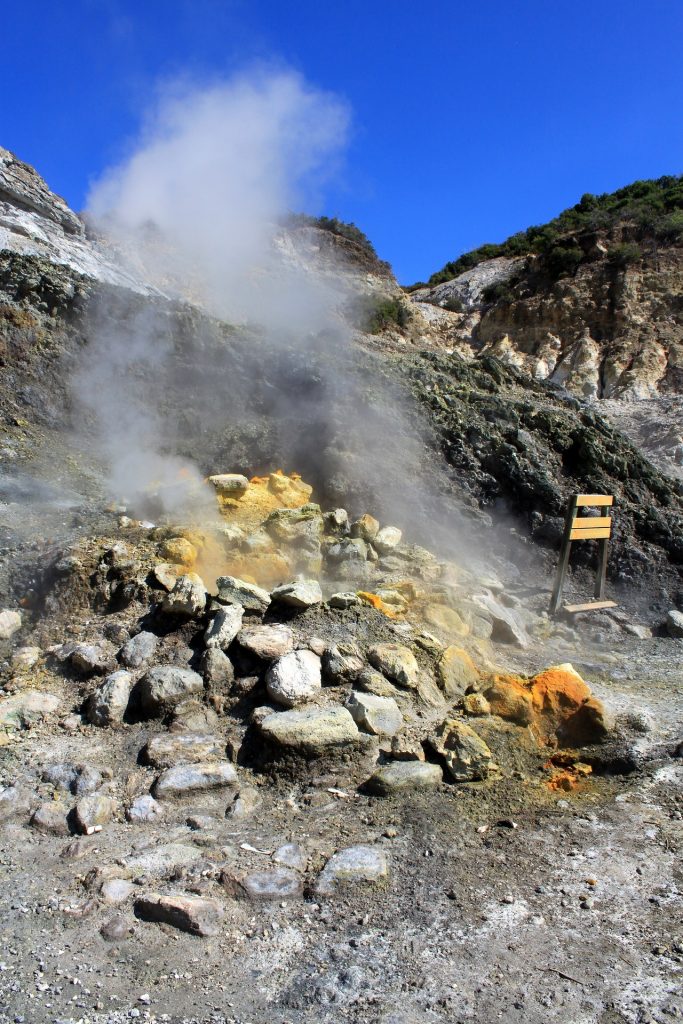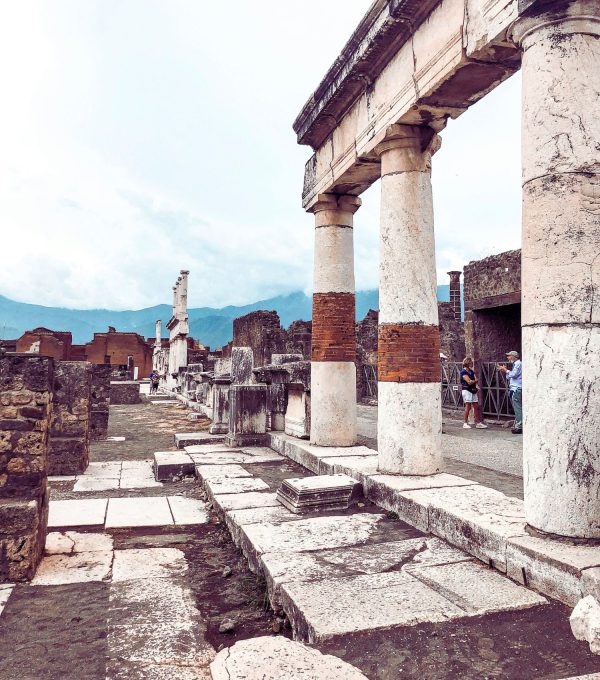Vesuvius holds the record of protagonist of the Neapolitan skyline, but Campania boasts many other volcanoes, perhaps less known but equally important; these are those of the Campi Flegrei, a volcanic area west of Naples, whose name derives from the Greek and means “burning fields”.
The Phlegraean Fields have been known since ancient times and have always fascinated men of any age; it is here that the first Greek colony of the western Mediterranean, namely Cuma, and the most important trading port of the Roman age, Puteoli (the current Pozzuoli).
In short, visiting the Campi Flegrei means immersing yourself in an atmosphere of history, archeology and nature to discover places as mysterious as they are fascinating.
What to see in Campi Flegrei
Those who decide to visit the Phlegraean Fields must be equipped with attention, patience and concentration to fully enjoy every single facet of this area that sparks lights and flames from all pores. On the occasion of a trip, here are the unmissable places:

Foto : Pixabay
Pozzuoli
The largest town of Campi Flegrei is Pozzuoli, with a historic center of the seventeenth century of immense beauty and rich in Roman monuments among the most beautiful and important in Europe. These include the Flavian Amphitheatre (the fourth largest in Italy), the Temple of Serapis, Lake Averno and the Acropolis of Cuma (where the Greeks landed to found first Pozzuoli and then Naples).
Not only that, because Pozzuoli is also known for the phenomenon of Bradisism, that is the volcanic activity that, based on the pressure determined by underground gases, increases or reduces the height of the city compared to sea level.
Sunken city of Baia
The Campi Flegrei overlook the sea, on whose seabed rests a submerged city characterized by wide streets, patrician villas and extraordinary ornaments. It is the Sunken City of Baia, a few kilometers from the coast, which despite being totally underwater is still clearly visible.
There have been many divers who, over the years, have “stolen” some items to bring them into their homes; however, the backdrop still remains rich in jewelry, ornaments, decorations and much more. You can admire all this on board a boat with a transparent bottom, while the most adventurous can enjoy real diving excursions.
Aragonese Castle of Baia
It rises on the upper part of the depression caused by the volcanoes called “Fondi di Baia” to observe the entire gulf of Pozzuoli: it is the Aragonese Castle, for years impregnable fortress, whose current star shape is due to the Spanish Viceroy Pedro Álvarez de Toledo.
The beautiful terrace of the castle overlooks the sea and allows you to observe all the Campi Flegrei. Its interiors have often changed their use, including military prisons, orphanages and shelters for displaced persons. Currently, however, the Aragonese Castle is the seat of the Archaeological Museum of the Phlegraean Fields, open at any time of the year.
Cento Camerelle and Mirabilis di Baia Swimming Pool
The Campi Flegrei also houses the structure of the Cento Camerelle, among the most fascinating Roman finds in the area. It consists of a set of narrow tunnels dug into the tuff that form a long path and that, in the light of the sun, seem to have been designed on the idea of a maze.
Once, the Hundred Chambers were known as the Prisons of Nero, because of their rather tangled shape; in reality, they would be a small part of one of the immense patrician villas that stood just near Baia.
Another very interesting Roman structure is the Mirabilis Pool, an immense underground pool composed of numerous naves that had the function of a cistern for drinking water. It is 72 meters long, 25 meters wide, 15 meters high and can hold up to 12600 cubic meters of water.
Monumental Park of Baia
The Monumental Park of Baia houses a large number of Roman remains recovered in the area; this is because, in Roman times, Baia became a “Little Rome” because the rich patricians loved to choose it as a holiday area. Here they lived practically without rules, full of fun and anarchy. Visiting the park means taking a leap back into the past to recall its ancient splendor.
The story of Agrippina is fairly well known to all: she was killed on the orders of her son Nero after the latter realized that he was planning her murder. Later, according to legend, Agrippina was buried in a mausoleum opposite the port of Baia. The structure in question, known as the Tomb of Agrippina, is actually a small theater visible, by the way, only in part. According to the fishermen of the area, during the nights of full moon, the ghost of Agrippina still walks on the surface of the water wearing a long white tunic.
Casina Vanvitelliana
In the middle of Lake Fusaro stands the Casina Vanvitelliana, a small villa wanted by the Bourbons who, in the area, held hunting trips and needed a refuge where to rest.
La Casina is an admirable example of 18th century architecture. Today, unfortunately, it is not possible to visit it inside, which is a shame since it has hosted illustrious personalities such as Mozart and Luigi Einaudi.
Temple of Venus and Temple of Diana
To close the visit to the Phlegraean Fields in beauty, you can not miss a stop at the Temple of Venus, so called because of the discovery of a statue of the goddess inside the remains of a Roman pool. The Romans, however, never used the pool as a temple.
The same goes for the Temple of Diana, located a few meters away; here, too, the structure is not a temple at all, but a part of the majestic villa built by Emperor Alexander Severus for his mother, Giulia Mamea. Currently, the Temple of Diana is located inside a private farm and you can admire it if, placed in front of the Temple of Venus, you slightly look up to the other.
Copertina: Pixabay




